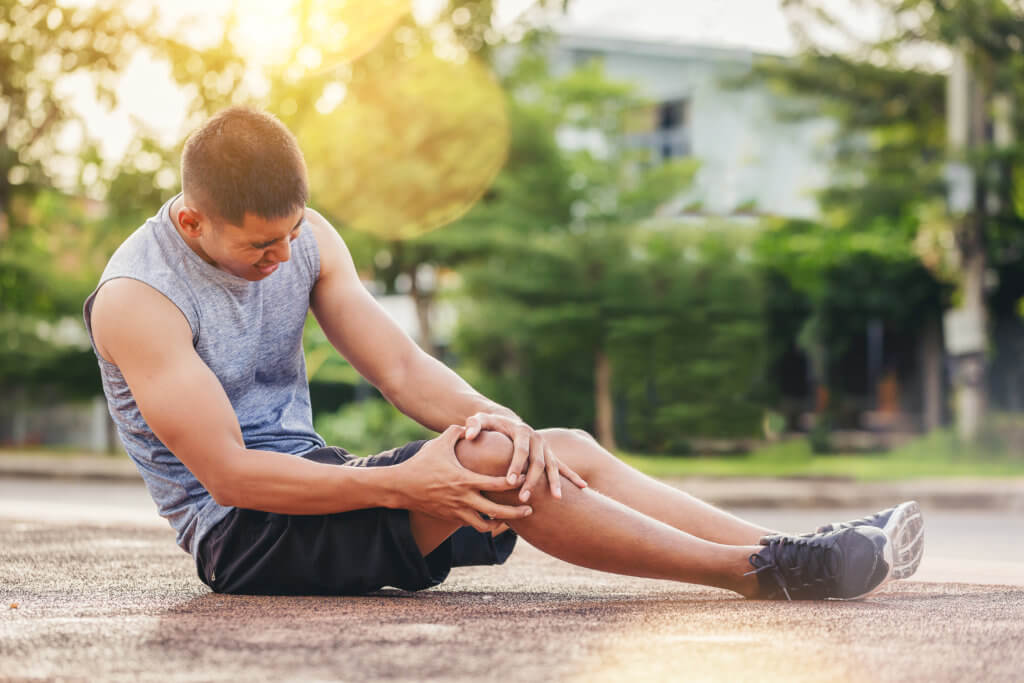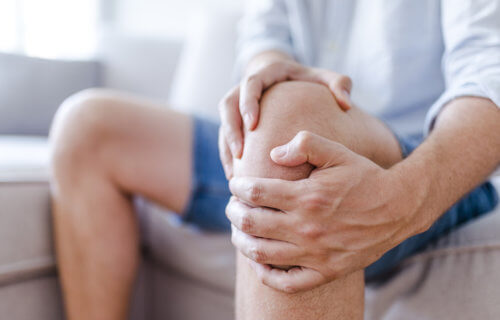STORRS, Conn. — Plenty of people avoid cardio like a bad habit, but those who habitually engage in running will likely tell you there’s no better feeling than going for an invigorating jog. Unfortunately, roughly a quarter of lifelong runners eventually develop patellofemoral pain syndrome, more commonly known as “runner’s knee.”
An overuse injury that is notoriously hard to treat and rehab, runner’s knee has stopped countless joggers from enjoying their exercise of choice. Now, researchers from the University of Connecticut suggest that what may work for one runner won’t help another. In other words, personalized rehabilitation may be necessary to effectively address chronic knee pain on an individual basis.
Neal Glaviano, an assistant professor of kinesiology in the College of Agriculture, Health and Natural Resources, in collaboration with Sungwan Kim, a Ph.D. student in his lab, discovered that current rehabilitation methods aimed at treating chronic knee pain may not be targeting all the right muscles.
Despite the name, runner’s knee can happen to anyone. Estimates show that 23 percent of the global population suffers from patellofemoral pain, affecting the area around the kneecap. Besides joggers, the condition is also quite common among military veterans.
“Across the board it’s a pretty significant impairment in people’s ability to lead happy and healthy lives,” Prof. Glaviano says in a university release.
Studies have shown that among patients with chronic patellofemoral pain, certain muscles in the legs and hips are weaker when it comes to both strength and endurance. These patients also display a decreased ability to generate maximal muscle contractions.
“It all comes back to there being some potential deficit in the muscle for some reason,” he notes.
Prof. Glaviano hypothesized that these deficits may be connected to the size of specific muscles found around the knee (the glute and quad muscles).
“A lot of the research shows consistent evidence that there’s weakness in those muscles,” he explains. “So, I expected those are the four muscles that we would discover are smaller in size compared to the healthy database.”
So, Prof. Glaviano and Kim worked with the Brain Imaging Research Center (BIRC) at UConn to conduct MRI scans of 13 female patients dealing with patellofemoral pain. Then, the researchers worked with Springbok, a company developed by researchers at the University of Virginia, to analyze muscle volumes for each individual patient.
The team focused on female patients because women are 2.2 times more likely to experience this kind of pain than men. Researchers still can’t explain this gender discrepancy.
“We thought trying to control for sex would allow us to answer our question a little more straightforwardly rather than having to worry about known differences in muscle size between males and females,” Prof. Glaviano says.

Study authors expected to note big differences in muscle size in the quads and glutes, but that didn’t turn out to be the case. Researchers did not see significant differences in the size of those muscles in patients living with patellofemoral pain in comparison to control (healthy) samples.
Instead, they saw that the muscles at the front of patients’ hips (their deep external hip rotators) and hamstrings were smaller. However, not all patients displayed impairments in the same muscles.
“The four main muscles that a lot of the research prioritizes as the target for rehabilitation were not actually smaller in size,” Prof. Glaviano comments. “I think it demonstrates the need to individualize patients’ treatment. We as clinicians and researchers need to quantify which muscles have impairment and target those in a patient’s treatment.”
Moving forward, study authors hope to continue researching this topic in order to investigate if rehabilitation interventions for patellofemoral pain can be better tailored and personalized for individual patients.
Most patients who currently receive rehabilitation for patellofemoral pain do not usually report long-term pain relief. This work may open the door toward addressing this shortcoming and improving countless peoples’ quality of life.
“There’s very little work on the muscles that were identified as being smaller, so that might explain why there’s such poor long-term outcomes in these patients,” Prof. Glaviano adds. “While we’re targeting their quads and their hip muscles, we might be missing other muscles that might also be important.”
Prof. Glaviano also wants to investigate muscle inhibition, which refers to when a muscle cannot perform optimally due to certain connected nerves failing to fire. Previous studies conducted by Prof. Glaviano have found that people with patellofemoral pain tend to experience inhibition in their glute and quad muscles.
“Maybe it’s not that the muscle is smaller,” Prof. Glaviano concludes. “It’s that the muscle isn’t able to recruit all the motor units available to be able to produce that force, and that’s why the weakness is present, not purely from a volumetric standpoint. We’ll have to continue to work to find out.”
The study is published in the journal Physical Therapy in Sport.
You might also be interested in:
- Opioid use due to knee pain, arthritis has cost society $14 billion
- Why pain seems worse at night
- Common painkillers like ibuprofen and naproxen can make arthritis inflammation even worse


Bad foot posture, dropping the inside ankle, will throw the leg/thigh alignment out. When you are no longer ‘in column’ it puts stresses on the knee. Put your forefinger on your knee pointing straight down and watch where it points when you raise your instep and inner ankle. Your weight should be equally distributed between the ball of the big toe, center of the heel, and the entire outer edge of the foot. I had a back injury and the pain caused me to go flat-footed and my knees began to hurt. I found a chiropractor who spotted the problem, did a foot adjustment and had me be conscious of proper foot posture. The pain was gone in weeks and years later has not returned.